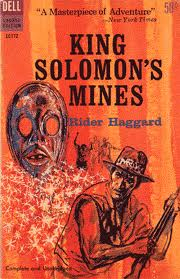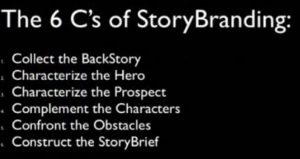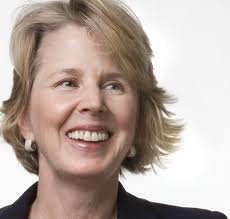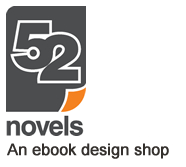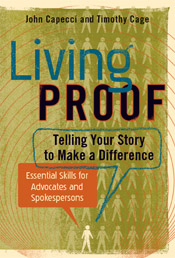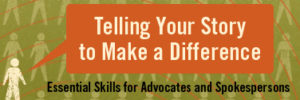Who might we hear as presenters at the next Reinvention Summit? Who are the future thought leaders who have visions of stories spinning in their heads and are newly charged up by Reinvention Summit 2? They just might be the group profiled below, who had the opportunity to describe their nascent projects, as well as the kind of support they seek from the community, during a “Showcase” session at Reinvention Summit 2.
You’ll learn even more about the first two, Kimberly Burnham and Dorit Sasson, because they have committed themselves to my Story Practitioners Q&A series. Both are also contributing authors to the forthcoming book, Pebbles in the Pond.
Kimberly Burnham, PhD, “The Nerve Whisperer,” uses storytelling to 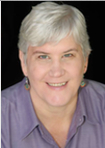 reinvent brain health. She uses her own story of vision recovery and the stories of her clients to inspire hope in people with genetic and neurological disorders, like Parkinson’s (her PhD dissertation focused on the use of Alternative medicine to resolve symptoms of Parkinson’s), macular degeneration (the most common cause of blindness in people over 60), Huntington’s, and fibromyalgia/chronic pain. Kimberly needs a bigger platform so she can reach more people with her story and motivate them to search for and find solutions for themselves. “Eyes can heal,” she says. “Genetic conditions can improve. Choose carefully who you listen to. Be conscious of what you tell yourself and others about your health and your future.” Kimberly has much more to share, but I will save most of it for my Q&A with her. In the meantime, you can understand more of where she’s coming from by reading her remarkable story of vision recovery and healing from migraines.
reinvent brain health. She uses her own story of vision recovery and the stories of her clients to inspire hope in people with genetic and neurological disorders, like Parkinson’s (her PhD dissertation focused on the use of Alternative medicine to resolve symptoms of Parkinson’s), macular degeneration (the most common cause of blindness in people over 60), Huntington’s, and fibromyalgia/chronic pain. Kimberly needs a bigger platform so she can reach more people with her story and motivate them to search for and find solutions for themselves. “Eyes can heal,” she says. “Genetic conditions can improve. Choose carefully who you listen to. Be conscious of what you tell yourself and others about your health and your future.” Kimberly has much more to share, but I will save most of it for my Q&A with her. In the meantime, you can understand more of where she’s coming from by reading her remarkable story of vision recovery and healing from migraines.
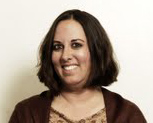 The mission of Dorit Sasson, author of Giving a Voice to the Voiceless, is to use voice as a story medium to help people experiencing disconnection and pain. Motivated by her own personal transformation, she wants to help clients try to find the light. Like Kimberly, Dorit seeks to reach people and build a bigger platform. Dorit tells her story on video, in the form of an excerpt from her chapter contribution to Pebbles in the Pond.
The mission of Dorit Sasson, author of Giving a Voice to the Voiceless, is to use voice as a story medium to help people experiencing disconnection and pain. Motivated by her own personal transformation, she wants to help clients try to find the light. Like Kimberly, Dorit seeks to reach people and build a bigger platform. Dorit tells her story on video, in the form of an excerpt from her chapter contribution to Pebbles in the Pond.
She also is currently offering a free 30-minute story strategy session for people who would like to give voice to their stories and learn more about how voice is an inextrictable point of this process. More information here. “Anyone who is interested,” Dorit says, “can shoot me an email, and I will contact him/her with our next steps.”
Aprille Byam has a story itch that she needs to scratch, she says. “My  project is in the very early stages,” she says. “I want to make story [of] what I do and, in sync with that, I want to be more creative in my career. I have a two-pronged effort. One is upcycled papercraft projects (starting with jewelry) that come with stories (see photo). “The way the pieces will be sold (much like collectible vinyl figure series), the stories will be in parts and will mix and match — much like the metamorphosis movable books of old.”
project is in the very early stages,” she says. “I want to make story [of] what I do and, in sync with that, I want to be more creative in my career. I have a two-pronged effort. One is upcycled papercraft projects (starting with jewelry) that come with stories (see photo). “The way the pieces will be sold (much like collectible vinyl figure series), the stories will be in parts and will mix and match — much like the metamorphosis movable books of old.”
The other prong, Aprille says, is to work to help others tell their stories and to make connections through stories. “I have some tangible ideas on how to do this for businesses, but would rather focus on people. That’s what ignites the fire in my belly; I’m just less certain where to start.”
 Aprille used to design future experiences at Kodak. There, she “got very excited about helping people access and relive their memories.” Given her belief “that the glory of stories is in the connections that they make — through the telling, through the audience, and through the response of the audience — the connections piece of her aspirations takes her Kodak experience “to the nth degree.” Aprille (who blogs here) continues:
Aprille used to design future experiences at Kodak. There, she “got very excited about helping people access and relive their memories.” Given her belief “that the glory of stories is in the connections that they make — through the telling, through the audience, and through the response of the audience — the connections piece of her aspirations takes her Kodak experience “to the nth degree.” Aprille (who blogs here) continues:
There is so much power to giving people the capability to connect on this level — or just making clear that they had that capability all along. It touches a fundamental chord — it’s how our brains process what we’ve been through, it’s how we translate our culture to others and to future generations, it’s how we convey who we are. If I can get to a place where I inspire one person to share a story they otherwise might not have, I will have succeeded.
Cassandra Ferrera describes herself as “a renegade real-estate agent who  loves the earth and community. I question ownership, and at the same time, advocate settling deeply into place. I help people listen to the earth, find connection and commitment, and become of place.”
loves the earth and community. I question ownership, and at the same time, advocate settling deeply into place. I help people listen to the earth, find connection and commitment, and become of place.”
Because her philosophy is not making her a lot of money as a real-estate agent, she is reinventing real estate, “not for the big bucks [but because] these ecological times desperately need us to become intimate with the very earth beneath our feet. Real estate needs to get with the program of ecological restoration (re-story-ation) and that motivates me to put my conflicts within a bigger story.”
Cassandra, who, as an astrologer, also encourages people to find their evolutionary story and align with the cyclical rhythms of nature, says:
I feel like an edge walker, and outsider, and yet I am one of the most socially connected people I know — usually too much so. I am definitely on the edge of my own story, healing my relationship with my body, the earth, and my tribe …
 Matt Mintz is working with a University of Minnesota Art Department to define and present stories about their collaboration with several Chinese art institutes. The program, he says, creates opportunities for faculty and student exchanges/residency projects. “By connecting through visual arts, participants learn about each others’ cultures,” Matt explains. “My project involves researching and telling an overarching story that attracts donors who will support further exchanges. The program itself is a vehicle for expanding individuals awareness and experience with a culture whose framework and stories are completely different. The end product may include print, online and video components.”
Matt Mintz is working with a University of Minnesota Art Department to define and present stories about their collaboration with several Chinese art institutes. The program, he says, creates opportunities for faculty and student exchanges/residency projects. “By connecting through visual arts, participants learn about each others’ cultures,” Matt explains. “My project involves researching and telling an overarching story that attracts donors who will support further exchanges. The program itself is a vehicle for expanding individuals awareness and experience with a culture whose framework and stories are completely different. The end product may include print, online and video components.”
Matt’s background in international business long ago brought him to the realization that “understanding a society’s backstory is indispensable in working with [that society] effectively.” He found that helping others understand the work he was doing in Japan and China for example became more interesting to him than the work itself. “Continuing in the theme of intercultural communication and storytelling inspired me to take this project,” he says. “It is important in helping me build a body of work to attract clients to the corporate storytelling film business I am creating.”
The objective of Matt’s business, he notes, “is to help organizations uncover their values through their stories and then package those stories to help improve employee engagement and alignment.” He is interested in creating film (he was a producer on the film In the Bubble, about sex addiction), but knows film “is just one way to use story.”
Tyler Hurst‘s project is his first book, a narrative memoir, Mostly True  Tales from My Somewhat Fictional Life, which is currently being edited. “It’s a collection of my life failures, hard times, and how I used them to improve myself,” Tyler says. “I wrote it because I believe that the more honest with the world about who we are, the better version of us we can be.”
Tales from My Somewhat Fictional Life, which is currently being edited. “It’s a collection of my life failures, hard times, and how I used them to improve myself,” Tyler says. “I wrote it because I believe that the more honest with the world about who we are, the better version of us we can be.”
Tyler says he wrote the book “because I want to convince other people that feel shame or guilt that it’s okay to admit what happened, because it will lift blinders they never knew they had.” The book releases by May 1 on Kindle and Podiobooks.com.
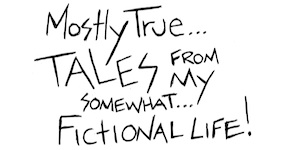 Another recent project was what Tyler and his new bride called A Storied Wedding. See Tyler delivering a TEDTalk that tells part of his story here.
Another recent project was what Tyler and his new bride called A Storied Wedding. See Tyler delivering a TEDTalk that tells part of his story here.
Bettina Casimir Clark didn’t have the chance to describe her project  during the showcase because her phone battery died before her turn, but she talked about it in the summit’s LinkedIn group. “Some old wounds just don’t seem to heal…. As I am looking back more then 40 years into my young adulthood, some trauma hit a precious nerve: I loved to talk and share — and suddenly no more,” she recalled. “Over the years I replaced this ‘silenced voice’ with these three “S”: smiling, submission, and superficiality — only to feel that NO voice can be silenced.”
during the showcase because her phone battery died before her turn, but she talked about it in the summit’s LinkedIn group. “Some old wounds just don’t seem to heal…. As I am looking back more then 40 years into my young adulthood, some trauma hit a precious nerve: I loved to talk and share — and suddenly no more,” she recalled. “Over the years I replaced this ‘silenced voice’ with these three “S”: smiling, submission, and superficiality — only to feel that NO voice can be silenced.”
Then Bettina underwent what she called “the unstoppable wake-up,” which occurred through dancing, art and photography, and inner work. In the past five years, she published two photo editorial books, Tomorrow is another NOW, and IBU, which was for a women empowerment foundation in Indonesia. “With this book, I intended to give marginalized women their voices back,” she said. “A simple yet moving concept: Snapshots of life with captions from Indonesian poets, revealing essence through the art of writing. This book is for sale at WADAH Foundation and a fundraiser.”
A third book is in process with the working title Leaping into AWARENESS”, 77 stories from around the World.” See Bettina’s Facebook page for Awareness Communications
 I’m sorry that I didn’t get much information about Andrew Melville‘s interest in “Story3 — story to the power of 3;” I lost my Internet connection in the midst of his Showcase session. Andrew notes that many story-related phenomena come in threes — three parts of the Hero’s Journey, three parts of the brain, for example. Andrew, who is a New Zealander, notes that one is greeted three times in Maori world. Andrew is working on an ebook about the Story3 concept. Andrew explains more about the concept here. Andrew’s blog is Spoke.
I’m sorry that I didn’t get much information about Andrew Melville‘s interest in “Story3 — story to the power of 3;” I lost my Internet connection in the midst of his Showcase session. Andrew notes that many story-related phenomena come in threes — three parts of the Hero’s Journey, three parts of the brain, for example. Andrew, who is a New Zealander, notes that one is greeted three times in Maori world. Andrew is working on an ebook about the Story3 concept. Andrew explains more about the concept here. Andrew’s blog is Spoke.

My storytelling friend and colleague, Gregg Morris, gracefully summed it up for me:


